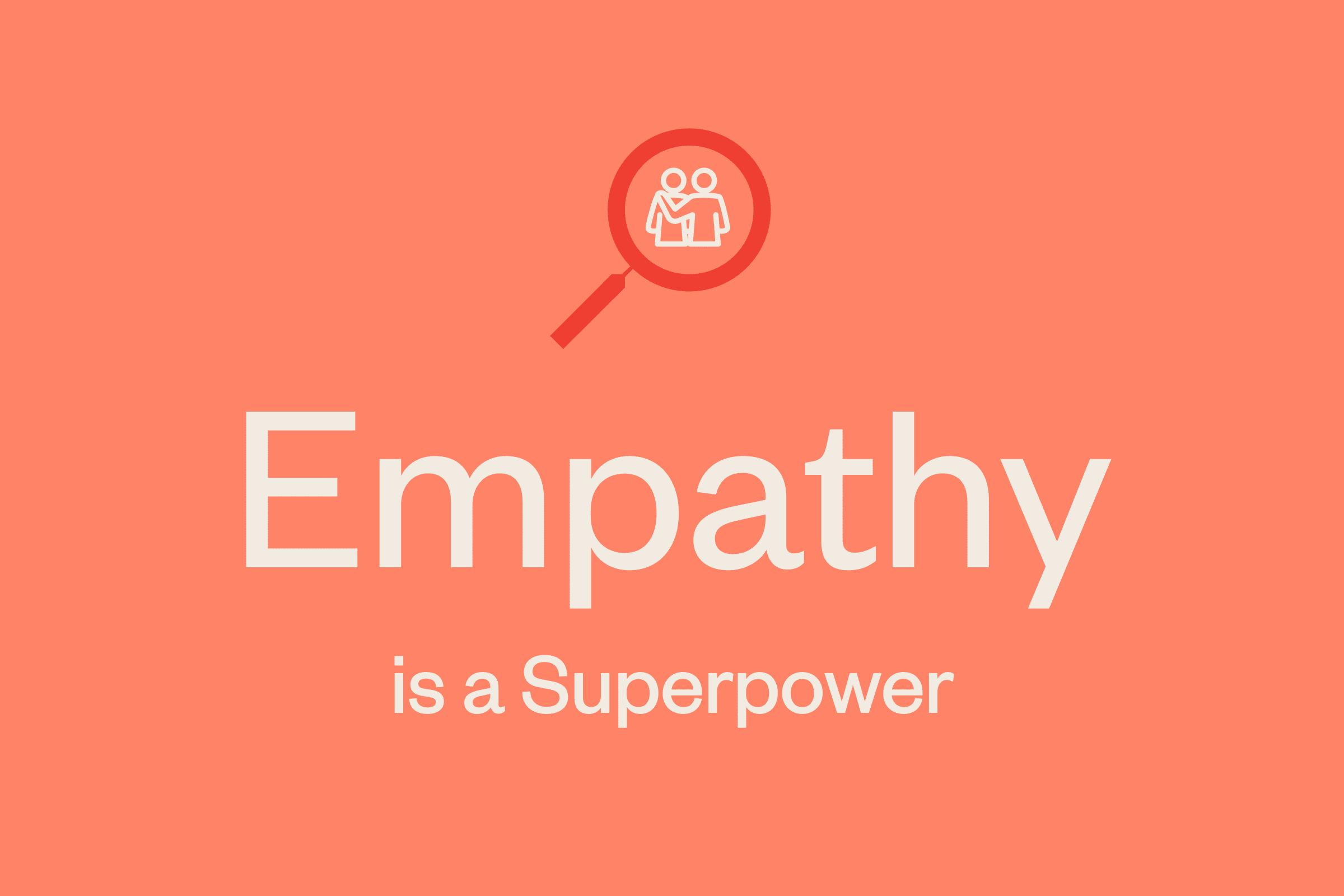In a culture that’s obsessed with Marvel movies and superpeople, most of us have likely answered this question at least once: If you could have any superpower, what would it be?
Maybe you’d choose to fly, or to be invisible, or to breathe fire.
But what if you were selecting a superpower for your entire workplace? Which one would you choose?
Here’s one suggestion based on decades of scientific research: empathy. It may be the closest thing to enabling your organization to become like members of the Avengers – a team that can take on any challenge.
“Empathy is an organizational superpower,” writes Stanford Assistant Professor of Psychology Jamil Zaki. “When leaders model, elevate and value human connection, their teams, customers and bottom line thrive.” Research suggests that when leaders demonstrate empathy, their workplaces see higher levels of performance, innovation, productivity, and engagement – along with increasing retention.
But even though many leaders and organizations pay lip service to empathy these days – especially post-pandemic – it’s also a term that is often misunderstood, and may not be taken as seriously as other “hard” skills in the workplace. What’s more, many workers say their employers aren’t always walking the talk of empathy. According to the State of Empathy 2021 report, only one in four employees thought that there was a “sufficient” amount of empathy inside their organizations – a number that hasn’t budged since 2020.
So what is empathy, really? And what can prevent us from valuing and cultivating it, as much as we do other workplace superpowers?
Empathy, defined
Like many of the best concepts, the origins of empathy are in the German language, explains Helen Riess, MD, the Director of the Empathy and Relational Science Program at Massachusetts General Hospital. In the mid-19th century, aestheticians first introduced it when they used the word “Einfühlung” to describe the experience of feeling an emotional connection with art – a kind of “knowing” it from inside themselves. Later, the psychologist Theodore Lipps extended the concept to knowing people, using it to describe, “feeling one’s way into the experience of another.”
That’s still a fairly accurate definition, but some modern definitions have a little more nuance. While there are many definitions of empathy out there, at the core, many of them surface the same concepts. According to Zaki, who is an empathy expert and the author of The War for Kindness, empathy is a term that describes three ways we connect with others and what they are experiencing.
- The first way we connect is through emotional empathy, which is the experience of feeling someone else’s emotions. This is when you see someone cry, and feel sad yourself. Emotional empathy can also be positive – you can experience another person’s joy or enthusiasm.
- Next is cognitive empathy, which is when we take on someone else’s perspective as we try to figure out what they might be feeling in a given moment. You might do this as you try to figure out the right question to ask, or the right thing to say, to a coworker who is upset. Important caveat: this part of empathy can be tricky, especially when we’re trying to consider the perspective of someone with a different background and set of lived experiences. In that case, it’s important to approach this step from a place of curiosity – asking someone how they might be feeling rather than assuming that you know. Due to the false consensus bias – which is our tendency to think that others think the same way that we do – it can be tough to even be aware of when we’re making these assumptions.
- The final variable of the empathy equation is compassion, which describes our motivation to help alleviate someone’s suffering. We’re compassionate when we not only take on someone else’s feelings and perspectives, but when we’re moved to do something as a result.
At Torch, compassion is one of nine leadership skills on which users evaluate themselves, and their colleagues, using a 360 assessment. (The Torch definition of compassion, from a literature review conducted by our behavioral science team, also encapsulates emotional empathy. Our definition: compassion is when leaders internalize the emotional states of their colleagues and actively reach out and offer help when appropriate).
The bottom line – while the concepts of empathy and compassion might sound soft or passive, in reality they are active skills that can be learned. They also have concrete impacts on individuals and organizations, and are essential for effective leadership.
What can stop us from cultivating empathy
According to a Torch data analysis from my behavioral scientist coworkers Lorien Elleman, PhD, and Mandy Varley, PhD, one barrier to embracing empathy as leaders could be harmful gender stereotypes. Women who fill out 360 assessments on the Torch platform are more likely to self-report that compassion is a strength for them compared with male self-reports. Coworkers are also more likely to say that their women colleagues are more skilled at expressing compassion in comparison with men. This data corroborates other research on the empathy and compassion gender gap that emerges when we describe leaders.
Although personality research suggests that, on average, women do tend to be higher in the trait agreeableness (which encompasses trust, morality, altruism, cooperation, modesty, and sympathy), we also know that personality is partly formed from our social environments. As a society, we often reward or discourage particular behaviors based on someone’s identity. Because empathy and compassion are stereotypically feminine traits, this may mean that women are more likely to identify as compassionate, and others are more likely to identify this trait in them, too. It may also mean that men are less likely to see themselves as compassionate.
This gender bias has implications for the kinds of traits leaders reward or discourage. For example, one study that asked people to select a set of “ideal” leadership traits found that participants tended to devalue those perceived as stereotypically feminine – such as cooperative, sincere, sensitive and tolerant.
When we devalue these traits, or assign the capacity for compassion and empathy to only one gender, we all miss out on the benefits of more empathetic relationships and workplaces. Not only can women feel pressured into behaviors that may not feel authentic – i.e., concealing frustration with forced tolerance – but men may not feel comfortable expressing their full range of emotions, or feel like they have social permission to connect deeply with others.
Stepping into the experience of another
How can we create a culture of empathy and compassion? Part of culture change involves individual change. We know that one route to becoming more empathetic and compassionate can be through the 360 assessment paired with coaching and mentoring. This process enables participants to become more self-aware of their development opportunities, while creating structured learning goals to support their growth.
For leaders, Zaki suggests another way to create cultures of empathy and compassion: by introducing and enforcing new cultural norms. For instance, he writes, a leader could call out an empathetic employee during an all-hands or in an all team email, or a workplace could introduce a bonus program, where employees are encouraged to share rewards with their colleagues to signal gratitude or encouragement.
Unlike the ability to shoot webs out of your wrists, fly, become invisible, or generate flames on demand, developing organizational or individual empathy doesn’t require getting bit by radioactive spiders, sustaining mutations, or internalizing strange cosmic energy.
It requires only the intention, and desire, to deepen your connections with others – and to get a little better at it every day.
Want to learn more about empathy, compassion, and how we can use them as tools for personal and organizational growth? Join a live conversation between me and Dr. Zaki on March 15, 2022.

